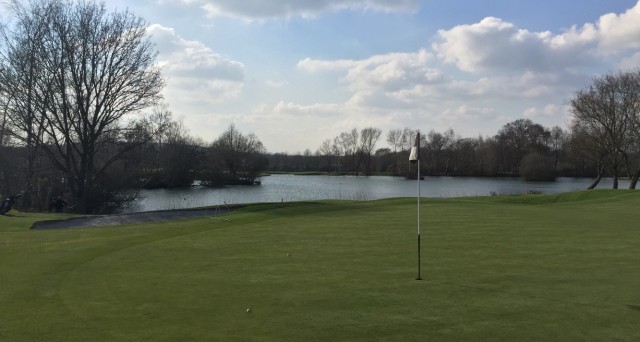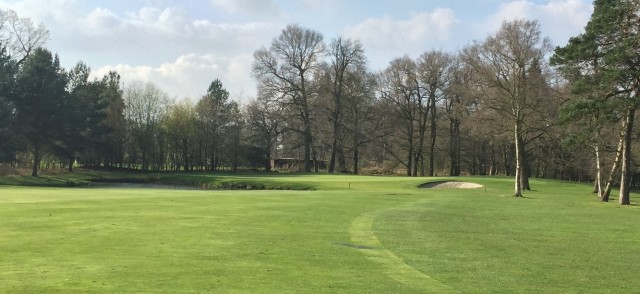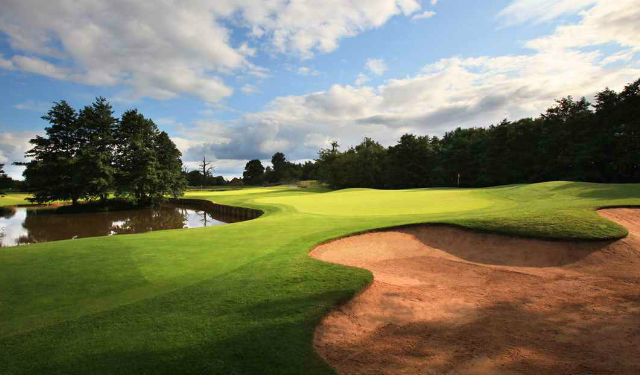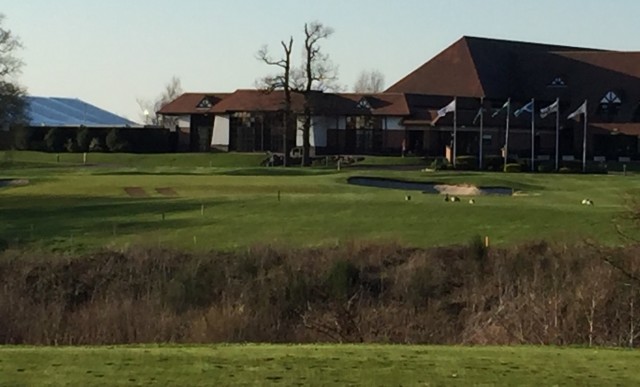Course Review - The Arden Course
Regarded as one of Britain’s top golf resorts, the Forest of Arden Marriott Hotel & Country Club features two exceptional golf courses in the Arden Course and the Aylesford Course. During my visit to this Marriott resort in Warwickshire I was able to play a round on the famous Arden Course.
The Arden Course was designed by Donald Steel in the early 1970s and has since played host to some memorable tournaments. Seven English Opens and five British Masters tournaments have seen like the likes of Thomas Bjorn, Colin Montgomerie and Darren Clarke all pick up silverware here.
It is clear that this course was designed for tour players as off the very back tees the courses stands at 7,213 yards. However, on this occasion I played off the white tees – which still offer a tough 6,707 yards of golf. This felt a lot tougher considering it was mid-March and the ground was soft, not to mention the strong breeze.
The friendly front nine

The Arden Course is very much a tale of two nines, with the front nine being the friendlier of the two. The course tees off with a gentle par-4 of 372-yards where the only danger is off the tee, as there is water in play for anyone who plays too close to the left hand side. From then on, the green is reasonably large and is potentially a chance to pick up an early birdie.
The 2nd can look very confusing off the tee as it is a severe dogleg to the left but an iron off the tee is probably the safe play here, providing you miss the large bunker on the right waiting to collect any shots that have been bailed out right. If you’re brave enough to hit driver, be aware that there is in fact a lot more room to the left if you can carry the trees and water.
The 3rd is a lovely, swooping par-5 that, at this time of year, allowed you to open up the shoulders with the driver. In the summer, with the ball running more, it may be sensible to hit a wood or long iron to come up just short of the beck that runs through the fairway. The approach shot is into a double green surrounded by bunkers so laying up more be a sensible option here if you can’t carry the sand.
The 4th was one my favourite holes the front nine, purely because of how it looked. A driver should get you down to the dogleg and a drive further to the left opens up a fast, sloping green that is well guarded by a pond on the left. If the pin is at the back you should club up as it is can be tough to fly the ball all the way to the back. A full shot with a wedge or short iron will almost certainly spin back down the hill.

The 5th is a tough par-3 as deep bunkers surround it, although the green is relatively large. There are a few gentle slopes to be wary of on this green, especially the ones that run off into the rough and bunkers.
The par-4 6th hole played a lot longer than its 419-yard measurement as the wind was blowing into. The hole plays slightly uphill and judging the second shot can often be a problem because of this. Make sure you club up when playing into the green that sits above you.
A birdie chance comes next at the 495-yard, par-5 7th hole, as long as you avoid hitting it left into the hazard off the tee. The green is reasonably small and has a narrow entrance but if you have got your tee shot far enough up, you wouldn’t be blamed for attempting to find the putting surface in two.
The par-3 8th is possibly the easiest of the par-3s but is an aesthetically pleasing one at that. The hole only measures 155-yards and the water doesn’t really come into play short of the hole.
To finish the front nine is a testing 428-yard par-4. The tee shot must be accurate here as any ball left or right of the fairway is in trouble, which you may not realise off the tee. You will then have a lengthy uphill approach to a narrow green. If you make par here, you should walked off the hole with your head held high. This is just a taster of what is to come on the back nine.
The testing back nine
The back nine feels like a completely different nine to the first as you head into the natural parkland section of the course. The 10th is a difficult hole as it doglegs to the right and requires a slight fade off the tee. However, if the tee shot is too far right you will face a long iron shot, that will require a strong fade to an elevated green.
However, the 11th hole gives you a bit of respite from the tough turn. The 343-yard par-4 is a definite birdie chance, as long as you hit it far enough to clear the fairway bunker. The green is quite deceptive so take your time over your putt here.
The 12th was possibly my favourite hole on the course as it looks so good from tee to green and is also a great risk and reward par-5. The drive is pretty straightforward but the real fun comes with the approach. The front of the green is completely protected by a large pond and if you want to go for it in two, you will need to clear all 75-yards of water. Many people lay up or bail out right, like myself, into a large bunker that leaves a relatively simple bunker shot down the length of the green. A thoroughly enjoyable hole, perfect for matchplay with your mates.

The 13th is stroke index one and a par here is definitely a good score. Off the tee, you should aim to play the ball from left to right. The shallow green then slopes from back to front and, to add to the challenge, there are deep bunkers protecting the front of the green.
Although it may look an easy hole, problems arise when you reach the green of the 14th. This is because it is in the shape of a saucer, sloping in from all sides. The numerous gentle slopes can often make those short putts tricky.
A long par-3 follows at the 15th hole and it is vital that you take one club more off the tee, possibly two if the wind is in your face. This is because anything left slightly short will roll back down to the front of the green and leave a testing two putt if the pin is at the back.
The dogleg 16th hole is a fantastic hole and requires some clever thinking off the tee. You can either play a left to right ball shape and play along the line of the hole or you can go for broke and try and power a drive over three big trees, leaving just a wedge. There is then a pond that guards the front of the shallow green and is the home to many amateurs golf ball, so make sure you have enough club on the approach.
Water lurks short and right of the par-5 17th hole so any tee shot that does not stay in the fairway should be laid up. Playing for position on the approach is probably your best chance of a birdie as you will allow yourself to play up the length of the green. At 487-yards, this hole offers a great chance of birdie.
The 18th is a fantastic finishing hole, and a difficult one too. The par-3 plays over water towards the hotel from an elevated tee and measures at 207-yards. Deep bunkers protect the green and can be a challenging approach for an amateur golfer but at the same time, gives you a chance to experience the tests professional golfers face almost every week.

Verdict
I would like to go back and play this course in the summer when the ball is running on the fairways. This would make for a much different challenge and would possibly make me think at bit more off the tee. At the same time, the greens were very quick for this time of year so I can’t imagine how good they will be in the summer.
If you’re in Warwickshire and enjoy a challenging golf course then this should definitely be on your list of courses to play. I would definitely play this course again.
Related Content: Forest of Arden

















